Table of Contents Show
The story of villains versus heroes is classic and done over a billion times. My Hero Academia is the latest trending media that take on the dichotomy of heroes and villains. For years, villains or villainous characters have been appealing to fans of film, comics, and even anime. So how does My Hero Academia fair when it comes to writing their villain characters? What makes the villains in My Hero so compelling that fans cannot help but love them? Fair warning that this article may contain spoilers for events in the latest chapters of the My Hero Academia manga.
Toga Himiko
Toga Himiko is one of the more popular villains in the series since she falls under the “sweet but psycho” category. A lot of her design and character traits resemble the iconic “yandere” girl trope in anime. “Yandere” girls are super bubbly and sweet but tend to have psychotic tendencies to hurt people in the way of their goals. Toga comes off as a creepy school girl obsessed with the main protagonist, Izuku Midoriya, and the main villain of the series, Stain.
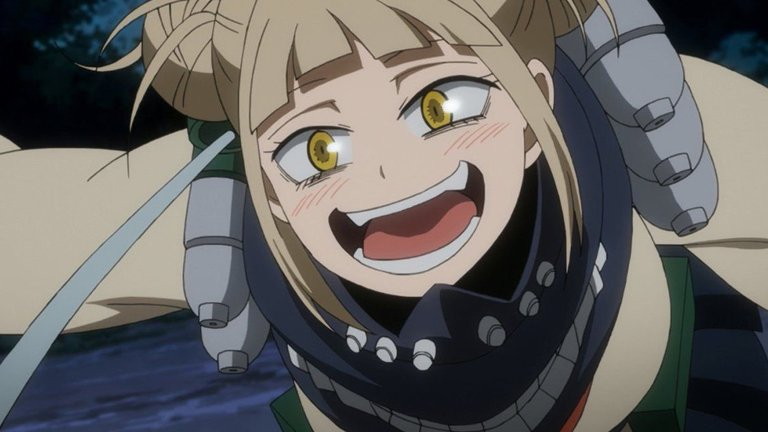
Horikoshi Kohei, the creator of My Hero Academia, gave Toga more depth than the cutesy girl she appears to be on screen. Toga has the quirk to transform into anyone if she drinks their blood. Because of her power, she seems to have an unnatural attraction to blood. Since this isn’t very typical and is kind of morbid, she is shunned by societal norms. Toga’s parents encourage her to repress her strange infatuation with blood and become a “normal girl.”
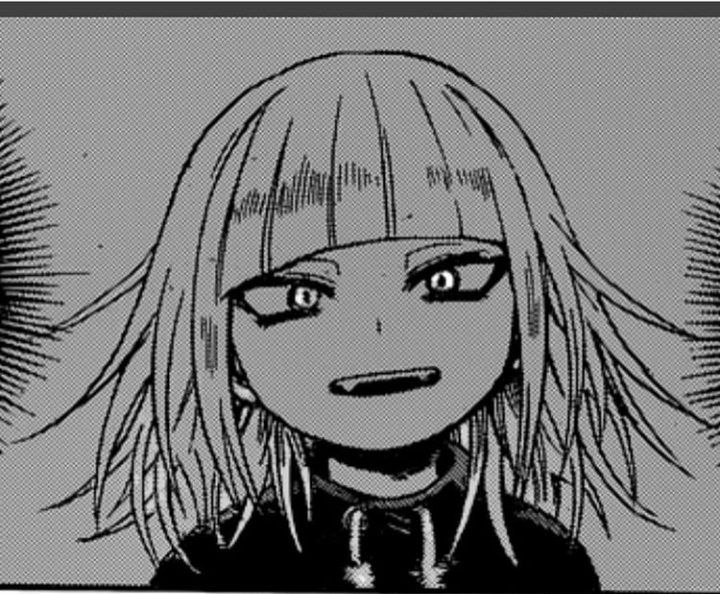
She ultimately did until middle school, when she saw a boy covered in blood and bruises. She attacked him and drank his blood, and to her classmates’ horror, she was crying but smiling while doing so. Since that incident, she ran away from her seemingly normal life and joined the league of villains to carry out Stain’s ideology. What is compelling about Toga is that she is forced to become a villain because her quirk makes her act and feel. I think many readers can empathize with the idea of being an outcast or not being able to fit into society’s idea of “normal.” Toga is an embodiment of someone who isn’t allowed to be their true selves because of what everyone else deems normal; that is why most readers and viewers enjoy her character.
Chizome Akaguro Aka Stain
Stain is notorious for being known as The Hero Killer. He thinks that heroes only become heroes for fame and fortune. Stain believes that All Might is the one true hero. All Might is the number one hero and his super strength and ideology is something that Stain respects deeply.
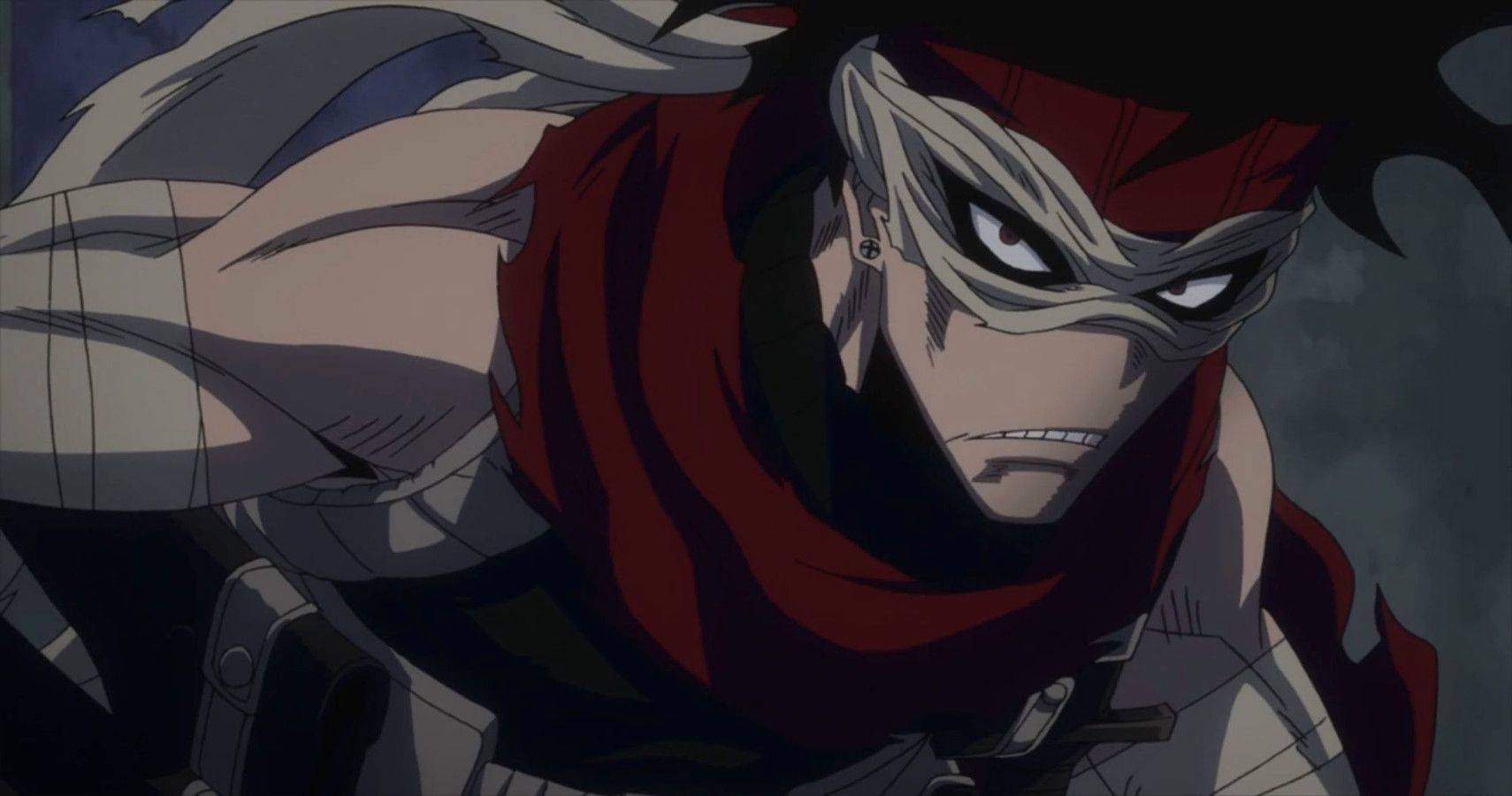
Stain’s ideology is a very strong one because he is right in the sense that he has pointed out a major flaw in hero society. Being a hero has become popularized within the society of My Hero Academia. Many people aspire to have a strong quirk in order to prove themselves as a hero. This is where Stain’s ideology comes in; your motivation to be a hero should be that of saving others and nothing else. Stain believes heroes are selfish and only try to rise up the popularity ranks.
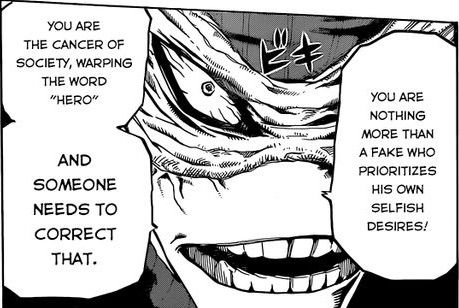
In a way, Stain acts as a martyr for the hero society. He understands that what he is doing is morally wrong… but continues to do it in order to send a message to the people. He also believes that people rely too much on the heroes to protect them and that society is too reliant on the hero justice system. What makes this character so compelling to viewers and readers is that this character exists solely to point out the story’s flaws. We all want to root for the main protagonist; we all want to root for the hero, but then Stain makes the viewer take a step back and question if that is even a good thing.
Tomura Shigaraki
Tomura Shigaraki is currently the leading antagonist of the My Hero Academia manga and the current season of the anime. He is the leader of the League Of Villains and the protégée of All Might’s foil, All for one. While Shigaraki’s ideology is similar to Stain’s, it is still very different, resulting in the two hating each other. Stain wants to reform hero society, whereas Shigaraki wants to destroy everything and everyone. Shigaraki’s quirk allows him to turn whatever he touches (other than himself) to ash. He literally wants to use his quirk to ashen and destroy everything.

So why do fans like him? His backstory is very heartbreaking, making a lot of sense for how he acts as a character. Shigaraki is very bratty; he comes off as confident and has a very short temper that he tends to lash out at others and even himself. Shigaraki has scarring on his neck from scratching due to anger or anxiety. What made him like this is his father; his father was very abusive and would lash out at him for wanting to be a hero.
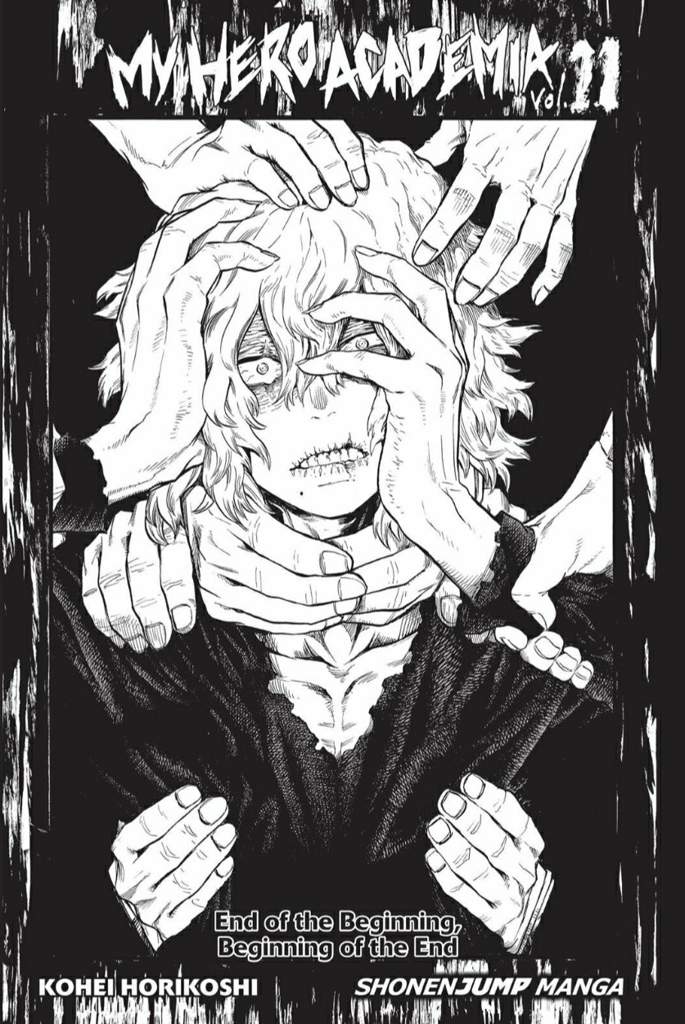
Yes, the main villain of My Hero Academia actually wanted to be a hero. Shigaraki suffered a lot of trauma from his childhood, but his breaking point was when his quirk manifested. His quirk manifested, and he destroyed every member of his family, not on purpose, but simply because he didn’t understand what was happening or what his quirk was.
He was later found by his mentor All for one and taken in as a child. His costume contains his loved ones’ hands as a physical reminder of all the weight he has emotionally carried because of his family. What makes Shigaraki compelling is he is a foil to the main protagonist. He was a young boy who also wanted to be a hero, but he suffered terrible mental abuse and trauma from having such a strong quirk. He was not only rejected from society, but his quirk caused him to reject himself from experiencing love, which is why he hates everything.
Dabi
When Dabi is first introduced to the story, he appears to be a mysterious man who holds Stain’s ideology close. He has a flashy fire quirk and an interesting set of burn scars all over his body. He is a fan favorite because his design and attitude are interesting, but the most recent manga chapters have given us more depth to his character. Fair warning, there will be spoilers ahead for chapters 290 and 291 of the My Hero Academia manga!
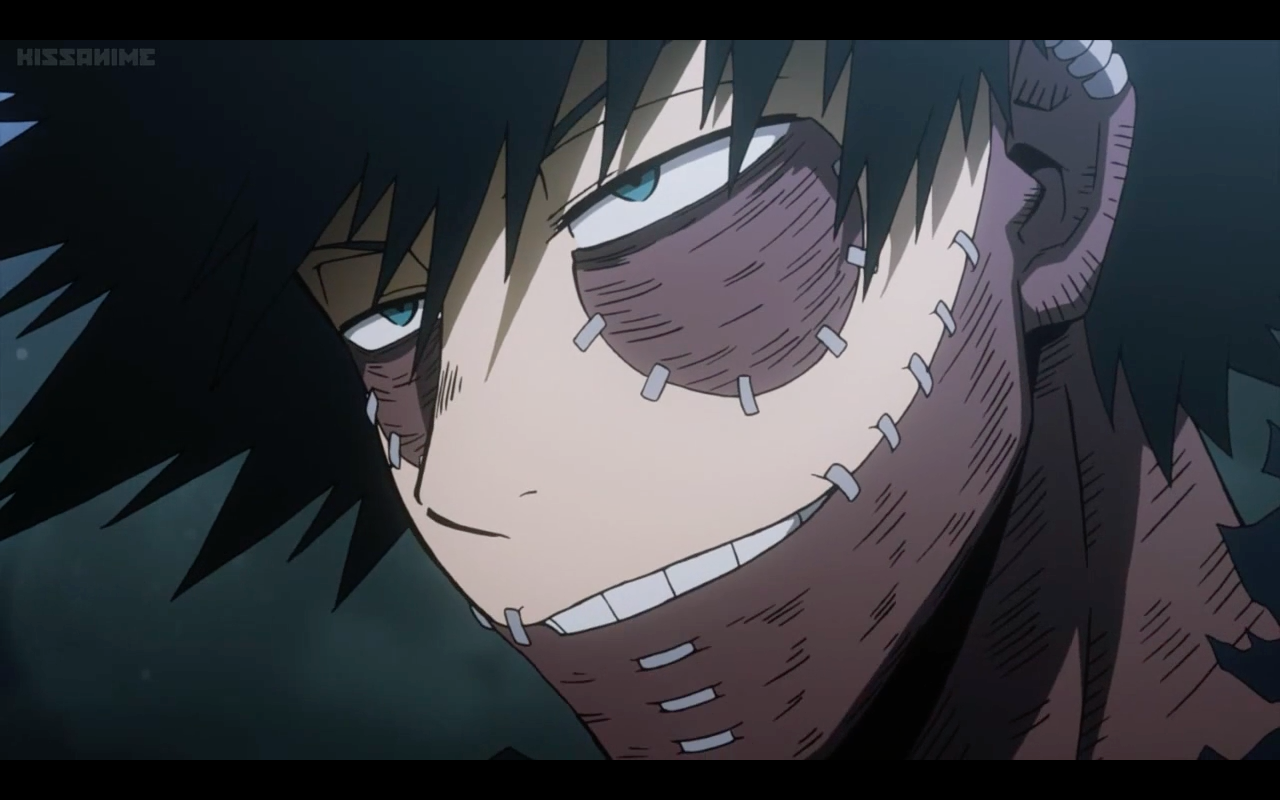
Since Dabi’s appearance, fans have been theorizing that he was related to one of the story’s main heroes, Shouto Todoroki, and Enji (Endeavor) Todoroki. Well, it turns out their theory was spot on as it has been confirmed in the most recent chapters that Dabi is Toya Todoroki. Fans were not surprised but overjoyed to finally have their theory confirmed, so much so that Dabi was trending on Twitter during a pivotal moment in US elections. Within this newest chapter, Dabi makes his reveal as Toya extra dramatic to his own father, who is currently the number one hero, that he is, in fact not dead.
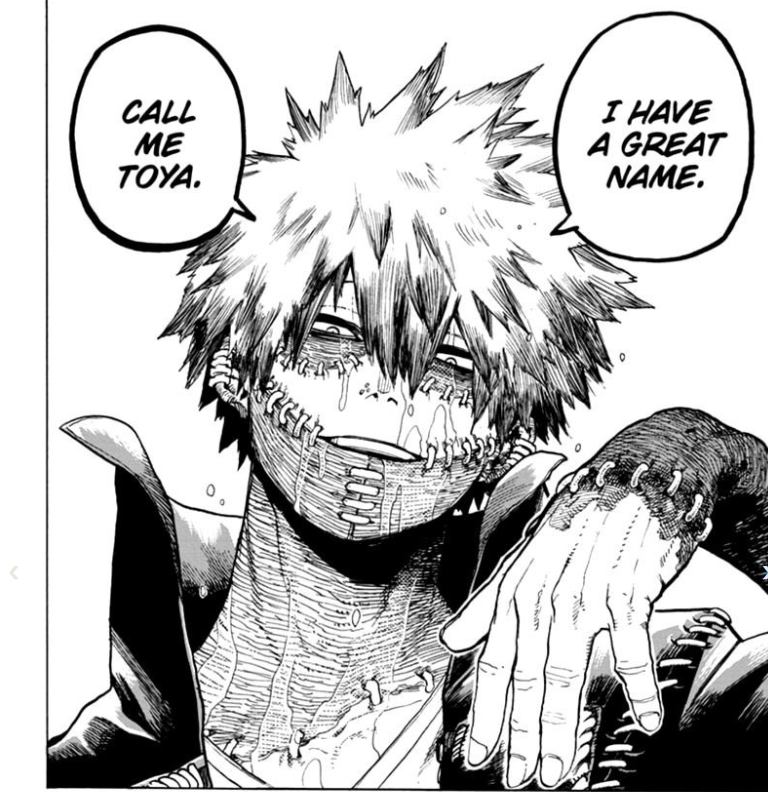
Dabi makes it a point to broadcast his reveal to the general public. Dabi goes into the fact that Endeavor was abusive to his wife and children, that Endeavor only continued to have children to produce an heir that would become stronger than All Might. He shows them that hero society is false for putting heroes such as Endeavor on a high pedestal. What makes Dabi/Toya so interesting and compelling to fans of My Hero Academia is that he is the product of an abuse of power. The very heroes we root for have created the villains we are supposed to root against. Dabi is not the only child of a pro-hero that has been scorned, as we can note from Shigaraki’s family line that heroes are just not meant to have families. Dabi is a good character for people to either empathize or relate to; he is a villain that you can’t help but love him and his chaotic energy.
The Good, The Bad, And The Ugly
Overall, there are many more villains with My Hero Academia that fans can either love to hate or identify with some of their issues/trauma. What is so great about the narrative in My Hero Academia specifically is that the villains actually create an interesting discussion of what it truly means to be a hero.
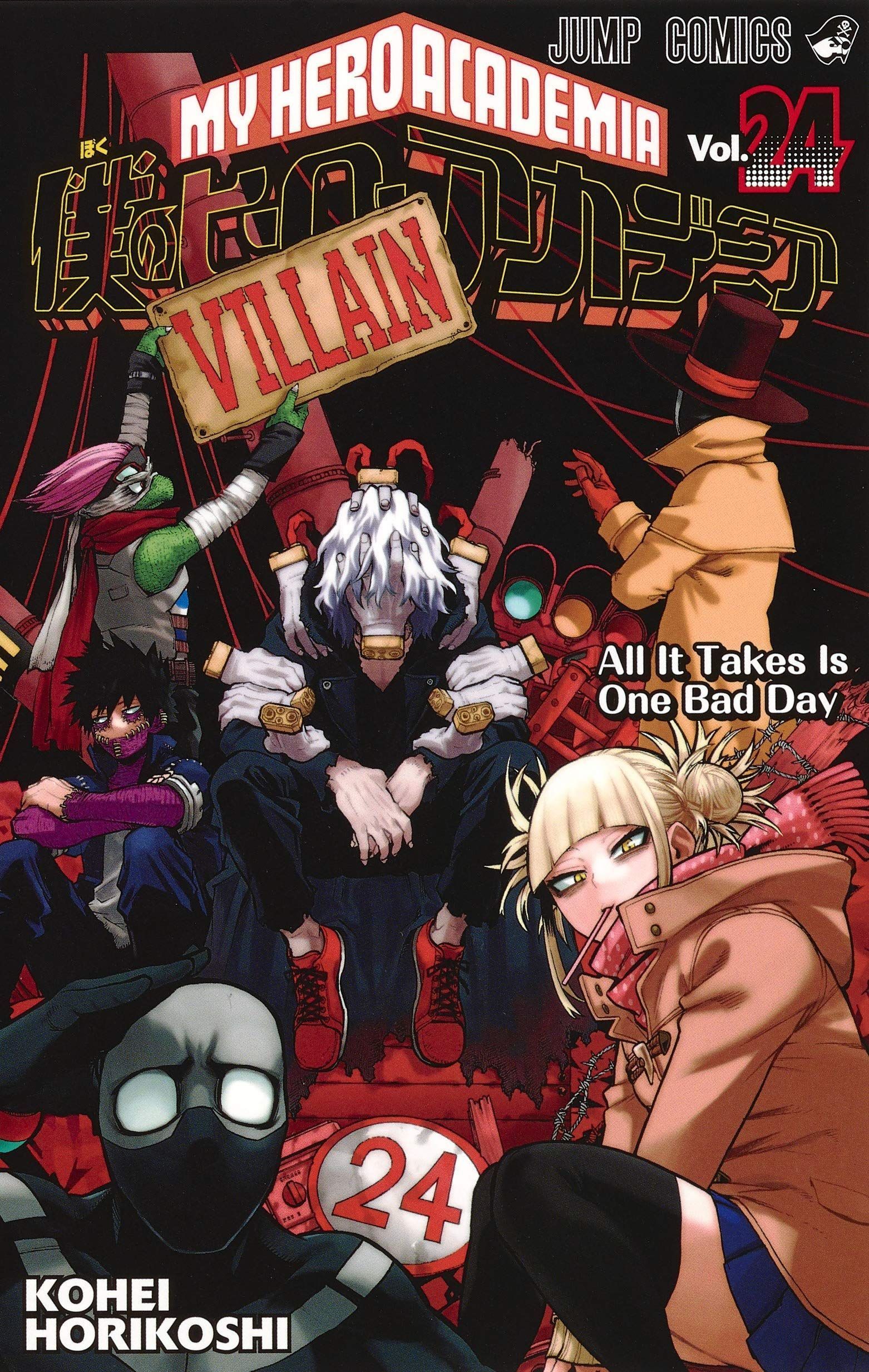
It makes readers step back and think about why they root for the heroes when not all of them are inherently good. My Hero Academia has done an amazing job with giving people such compelling villains to root for. All in all, these are villains that we cannot even hate that much because we love their ideology or compelling narratives way too much.
